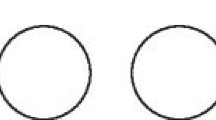Abstract
Introduction
The aim of the present umbrella review was to answer the following question: “Does the use of NSAIDs as premedication increase the efficacy of the standard inferior alveolar nerve block on teeth with symptomatic irreversible pulpitis?”
Material and methods
Systematic reviews with and without meta-analyses that evaluated the influence of premedication on anesthetic efficacy of the inferior alveolar nerve in symptomatic irreversible pulpitis of mandibular molars were searched in six electronic databases (MEDLINE/PubMed, Scopus, Web of Science, Cochrane Library, EMBASE, and Grey Literature Reports), without the restriction of language or year of publication. A Measurement Tool to Assess systematic Reviews (AMSTAR 2) was used to evaluate the quality of the included studies.
Results
Twelve systematic reviews were included. Only one did not perform a meta-analysis. The AMSTAR 2 overall confidence ranged from very low to high. In general, the main findings of the systematic reviews were that non-steroidal anti-inflammatory drugs (e.g., ibuprofen, oxicam, diclofenac, association of ibuprofen with acetaminophen, and ketorolac) increased the success rate of the inferior alveolar nerve block.
Conclusions
From the “very low” to “high”–quality evidence available, this umbrella review concluded that NSAIDs as premedication acts through cyclooxygenase pathways and block the synthesis of specific prostaglandins that complicate the mechanism of action of the anesthesia, improving its success rate.
Clinical relevance
Non-steroidal anti-inflammatory drugs can increase the success rate of the anesthetic technique of inferior alveolar nerve block efficacy in situations of mandibular molars with symptomatic irreversible pulpitis.


Similar content being viewed by others
References
Claffey E, Reader A, Nusstein J, Beck M, Weaver J (2004) Anesthetic efficacy of articaine for inferior alveolar nerve blocks in patients with irreversible pulpitis. J Endod 30:568–571
Bigby J, Reader A, Nusstein J, Beck M (2007) Anesthetic efficacy of lidocaine/meperidine for inferior alveolar nerve blocks in patients with irreversible pulpitis. J Endod 33:7–10
Reisman D, Reader A, Nist R, Beck M, Weaver J (1997) Anesthetic efficacy of the supplemental intraosseous injection of 3% mepivacaine in irreversible pulpitis. Oral Surg Oral Med Oral Pathol Oral Radiol Endod 84:676–682
Nusstein J, Reader A, Nist R, Beck M, Weaver J (1998) Anesthetic efficacy of the supplemental intraosseous injection of 2% lidocaine with 1:100,000 epinephrine in irreversible pulpitis. J Endod 24:487–491
Kennedy S, Reader A, Nusstein J, Beck M, Weaver J (2003) The significance of needle deflection in success of the inferior alveolar nerve block in patients with irreversible pulpitis. J Endod 29:630–633
Lindemann M, Reader A, Nusstein J, Drum M, Beck M (2008) Effect of sublingual triazolam on the success of inferior alveolar nerve block in patients with irreversible pulpitis. J Endod 34:1167–1170
Argueta-Figueroa L, Arzate-Sosa G, Mendieta-Zeron H (2012) Anesthetic efficacy of articaine for inferior alveolar nerve blocks in patients with symptomatic versus asymptomatic irreversible pulpitis. Gen Dent 60:e39–e43
Fowler S, Drum M, Reader A, Beck M (2016) Anesthetic success of an inferior alveolar nerve block and supplemental articaine buccal infiltration for molars and premolars in patients with symptomatic irreversible pulpitis. J Endod 42:390–392
Aggarwal V, Singla M, Miglani S (2017) Comparative evaluation of anesthetic efficacy of 2% lidocaine, 4% articaine, and 0.5% bupivacaine on inferior alveolar nerve block in patients with symptomatic irreversible pulpitis: a prospective, randomized, double- blind clinical trial. J Oral Facial Pain Headache 31:124–128
Pulikkotil SJ, Nagendrababu V, Veettil SK, Jinatongthai P, Setzer FC (2018) Effect of oral premedication on the anesthetic efficacy of inferior alveolar nerve block in patients with irreversible pulpitis – a systematic review and network meta-analysis of randomized controlled trials. Int Endod J 51:989–1004
Chaudhary P, Martenson ME, Baumann TK (2001) Vanilloid receptor expression and capsaicin excitation of rat dental primary afferent neurons. J Dent Res 80:1518–1523
Stenholm E, Bongenhielm U, Ahlquist M, Fried K (2002) VRl- and VRL-l-like immunoreactivity in normal and injured trigeminal dental primary sensory neurons of the rat. Acta Odontol Scand 60:72–79
Goodis HE, Poon A, Hargreaves KM (2006) Tissue pH and temperature regulate pulpal nociceptors. J Dent Res 85:1046–1049
De Geus JL, Wambier LM, Boing TF, Loguercio AD, Reis A (2018) Effect of ibuprofen on the efficacy of inferior alveolar nerve block in patients with irreversible pulpitis: a meta-analysis. Aust Endod J 45:246–258
Khalil H (2014) A basic review on the inferior alveolar nerve block techniques. Anesth Essays Res 8:3–8
Hargreaves KM, Keiser K (2002) Local anesthetic failure in endodontics. Endod Top 1:26–39
Averbuch M, Katzper M (2000) Baseline pain and response to analgesic medications in the postsurgery dental pain model. J Clin Pharmacol 40:133–137
Gould HJ, England JD, Soignier RD et al (2004) Ibuprofen blocks changes in Na v 1.7 and 1.8 sodium channels associated with complete Freund’s adjuvant–induced inflammation in rat. J Pain 5:270–280
Gasner N, Ouanounou A (2021) Analgesics and pain management following root canal therapy. Essent Dent 1:1–11
Tupyota P, Chailertvanitkul P, Laopaiboon M et al (2018) Supplementary techniques for pain control during root canal treatment of lower posterior teeth with irreversible pulpitis: a systematic review and meta-analysis. Aust Endod J 44:14–25
Zanjir M, Lighvan NL, Yarascavitch C, Beyene J, Shah PS, Azarpazhooh A (2019) Efficacy and safety of pulpal anesthesia strategies during endodontic treatment of permanent mandibular molars with symptomatic irreversible pulpitis: a systematic review and network meta-analysis. J Endod 45:1435–1464
Nagendrababu V, Pulikkotil SJ, Veettil SK, Teerawattanapong N, Setzer FC (2018) Effect of nonsteroidal anti-inflammatory drug as an oral premedication on the anesthetic success of inferior alveolar nerve block in treatment of irreversible pulpitis: A systematic review with meta-analysis and trial sequential analysis. J Endod 44:914–922
Maia LC, Antonio AG (2012) Systematic reviews in dental research. A guideline J Clin Pediatr Dent 37:117–124
Moher D, Shamseer L, Clarke M et al (2015) Preferred reporting items for systematic review and meta-analysis protocols (PRISMA- P) 2015 statement. Syst Rev 4:1
Page MJ, McKenzie JE, Bossuyt PM et al (2020) Mapping of reporting guidance for systematic reviews and meta-analyses generated a comprehensive item bank for future reporting guidelines. J Clin Epidemiol 118:60–68
Shea BJ, Reeves BC, Wells G et al (2017) AMSTAR 2: a critical appraisal tool for systematic reviews that include randomised or non-randomised studies of healthcare interventions, or both. BMJ 358
Wong YJ (2019) Does oral nonsteroidal anti-inflammatory drugs (NSAIDs) premedication in patients with irreversible pulpitis increase the success rate of inferior alveolar nerve block? Evid Based Dent 20:20–21
Li C, Yang X, Ma X, Li L, Shi Z (2012) Preoperative oral nonsteroidal anti-inflammatory drugs for the success of the inferior alveolar nerve block in irreversible pulpitis treatment: a systematic review and meta-analysis based on randomized controlled trials. Quintessence Int 43:209–219
Corbella S, Taschieri S, Mannocci F, Rosen E, Tsesis I, Fabbro MD (2017) Inferior alveolar nerve block for the treatment of teeth presenting with irreversible pulpitis: a systematic review of the literature and meta-analysis. Quintessence Int 48:69–82
Shirvani A, Shamszadeh S, Eghbal MJ, Marvasti LA, Asgary S (2017) Effect of preoperative oral analgesics on pulpal anesthesia in patients with irreversible pulpitis—a systematic review and meta-analysis. Clin Oral Investig 21:43–52
Fan D, Pan J, Cao Y, Liu W, Li C, Liu B (2018) Pre-emptive use of non-steroids anti-inflammatory drugs for a successful inferior alveolar nerve block in patients with irreversible pulpitis: a systematic review and network meta-analysis. Int J Clin Exp Med 11:11567–11577
Sivaramakrishnan G, Sridharan K (2018) Oral ketorolac with inferior alveolar nerve block for irreversible pulpitis: a systematic review and meta-analysis. Open Dent J 12:340–346
Sivaramakrishnan G, Alsobaiei M, Sridharan K (2019) Interventions for anesthetic success in symptomatic irreversible pulpitis: a network meta-analysis of randomized controlled trials. J Dent Anesth Pain Med 19:323
Karapinar-Kazandag M, Tanalp J, Ersev H (2019) Effect of premedication on the success of inferior alveolar nerve block in patients with irreversible pulpitis: a systematic review of the literature. BioMed Res Inter:6587429
Sterne JAC, Savović J, Page MJ et al (2019) RoB 2: a revised tool for assessing risk of bias in randomised trials. BMJ 366:l4898
Gunaydin C, Bilge SS (2018) Effects of nonsteroidal anti-inflammatory drugs at the molecular level. Eur J Med 50:116–121
Page MJ, McKenzie JE, Bossuyt PM et al (2021) The PRISMA 2020 statement: an updated guideline for reporting systematic reviews. BMJ 372:1–9
Rao P, Knaus EE (2008) Evolution of nonsteroidal anti-inflammatory drugs (NSAIDs): cyclooxygenase (COX) inhibition and beyond. J Pharm Knauss Sci 11:81s–110s
Mazaleuskaya LL, Theken KN, Gong L et al (2015) PharmGKB summary: ibuprofen pathways. Pharmacogenet Genomics 25:96–106
Gudis K, Tatsuguchi A, Wada K et al (2005) Microsomal prostaglandin E synthase (mPGES)-1, mPGES-2 and cytosolic PGES expression in human gastritis and gastric ulcer tissue. Lab Investig 85:225–236
Lazer ES, Miao CK, Cywin CL et al (1997) Effect of structural modification of enol-carboxamide-type nonsteroidal antiinflammatory drugs on COX-2/COX-1 selectivity. J Med Chem 40:980–989
Xu S, Rouzer CA, Marnett LJ (2014) Oxicams, a class of nonsteroidal anti-inflammatory drugs and beyond. IUBMB Life 66:803–811
Gan TJ (2010) Diclofenac: an update on its mechanism of action and safety profile. Curr Med Res Opin 26:1715–1731
Moore PA, Hersh EV (2013) Combining ibuprofen and acetaminophen for acute pain management after third-molar extractions. J Am Dent Assoc 144:898–908
Simmons DL, Botting RM, Robertson PM, Madsen ML, Vane JR (1999) Induction of an acetaminophen-sensitive cyclooxygenase with reduced sensitivity to nonsteroidal antiinflammatory drugs. Proc Natl Acad Sci 96:3275–3280
Preshaw PM, Lauffart B, Brown P, Zak E, Heasman PA (1998) Effects of ketorolac tromethamine mouthrinse (0.1%) on crevicular fluid prostaglandin E2 concentrations in untreated chronic periodontitis. J Periodontol 69:777–783
Giménez M, Pujol J, Ali Z et al (2014) Naproxen effects on brain response to painful pressure stimulation in patients with knee osteoarthritis: a double-blind, randomized, placebo-controlled, single-dose study. J Rheumatol 41:2240–2248
Lucas S (2016) The pharmacology of indomethacin. Headache 56:436–446
Inoue N, Ito S, Tajima K et al (2009) Etodolac attenuates mechanical allodynia in a mouse model of neuropathic pain. J Pharmacol Sci 109:600–605
Iolascon G, Giménez S, Mogyorósi D (2021) A review of aceclofenac: analgesic and anti-inflammatory effects on musculoskeletal disorders. J Pain Res 14:3651–3663
Varrassi G, Pergolizzi JV, Dowling P, Paladini A (2020) Ibuprofen safety at the golden anniversary: are all NSAIDs the same? A narrative review. Adv Ther 37:61–82
Author information
Authors and Affiliations
Contributions
Gabriel Barcelos Só: investigation, writing—original draft
Isadora Ames Silva: investigation, writing—original draft
Theodoro Weissheimer: investigation, methodology, data curation, writing—review and editing
Tathiane Larissa Lenzi: methodology, formal analysis, validation
Marcus Vinícius Reis Só: visualization, formal analysis, writing—review and editing
Ricardo Abreu da Rosa: concept, supervision, project administration
Corresponding author
Ethics declarations
Ethics approval
This paper does not contain any studies with human participants or animals performed by any of the authors.
Consent to participate
For this type of study, formal consent is not required.
Conflict of interest
The authors declare no competing interests.
Additional information
Publisher’s note
Springer Nature remains neutral with regard to jurisdictional claims in published maps and institutional affiliations.
Supplementary Information
Rights and permissions
Springer Nature or its licensor (e.g. a society or other partner) holds exclusive rights to this article under a publishing agreement with the author(s) or other rightsholder(s); author self-archiving of the accepted manuscript version of this article is solely governed by the terms of such publishing agreement and applicable law.
About this article
Cite this article
Só, G.B., Silva, I.A., Weissheimer, T. et al. Do NSAIDs used prior to standard inferior alveolar nerve blocks improve the analgesia of mandibular molars with irreversible pulpitis? An umbrella review. Clin Oral Invest 27, 1885–1897 (2023). https://doi.org/10.1007/s00784-023-04979-3
Received:
Accepted:
Published:
Issue Date:
DOI: https://doi.org/10.1007/s00784-023-04979-3




